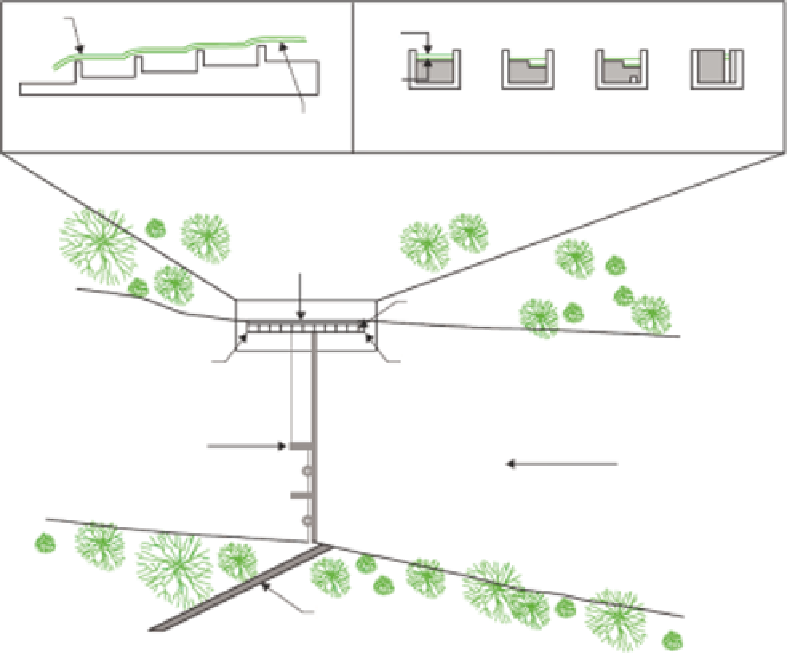Environmental Engineering Reference
In-Depth Information
Q
hf
Longitudinal profile
Cross section
Q
hf
Q
lf
Single weir
Composite
weir
Weir with
orifice
Vertical slot
Q
lf
Concrete ladder
Flow control
gate
Entrance
Exit
Diversion dam
Flow direction
Irrigation diversion
FIGURE 8.20
Plan view of a generalized concrete ladder ish passage facility. (From NRCS, Fish passage
and screening design, Technical supplement 14N (210-VI-NEH),
Part 654 National Engineering Handbook
,
Natural Resources Conservation Service, 2007b.)
poured-concrete lumes with a series of wooden bafles shaped like window frames installed per-
pendicular to the water low. These ishways may be more than 100 ft. long, 10 ft. wide, and 8-10 ft.
high. Denil ishways typically require a high degree of operational supervision and maintenance
(CDOT 2007) to keep them free of debris.
8.4.10.3 Culvert Modiication and Design
Culverts are among the most common barriers to ish movement. Some of the common ways, as
listed by the NRCS (2007b), that culverts act as barriers include:
•
High velocities or sudden velocity changes at the inlet or outlet or inside the culvert barrel
•
Inadequate low depth in the culvert barrel during critical migration periods
•
Excessive length without adequate resting areas
•
Signiicant drop at the culvert outlet
•
Debris accumulation at the culvert inlet, outlet, or inside the culvert barrel
•
Excessive turbulence inside the culvert or at its outlet or inlet
In many cases, the optimal solution is to replace the culvert, as illustrated by Figure 8.24. The
NRCS (2007b) describes a stream simulation method that could be used to design culverts for ish
passage. The USDA Forest Service (2006) also distributes FishXing (pronounced ish crossing),
which is designed to assist in the evaluation and design of culverts for ish passage.

Search WWH ::

Custom Search